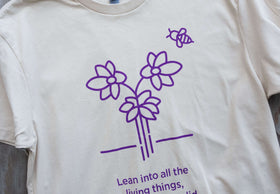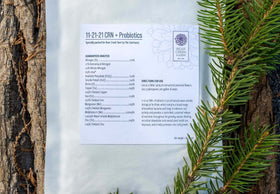Everyday we are learning more and more that the language of flowers is very real - but not in the traditional, romantic way we have traditionally thought about it. A recent article in The New York Times talks about the sounds that plants make in response to stresses like dehydration or a cut. Just as humans might grumble, grouse or grown, plants make popping noises when they are having a bad day. The article, concerning the language of flowers, fell into my inbox just as I was thinking about cosmos flowers. As I read, I extrapolated into the macro universe of botany.
I believe that our simple powers of human observation are key to understanding exactly what our botanical beauties are telling us and this can facilitate meaningful dialogue. To my mind, growers, from novice to expert, can trust themselves - as empowered partners in learning to “read” the flower patch as one would “read” a room. In so doing, growers can respond to a variety of floral situational dynamics – and even quietly help ecosystems along as we facilitate botanical/human connection in critical ways.
At Bear Creek Farm, where we nurture beauty from the ground up, we offer guidance for the purpose of emboldening flower growers at all levels to respond to evolving and emergent challenges and opportunities through their heart and their senses. Our blog offers specific advice (and takeaways from lessons learned) of how to focus on nature and oneself. Above all however, before you start reading too much about overly specific plant care instruction, know these things:

- A gardener’s intuition is real. The key to becoming a “master” grower (this term is loosely defined, an ever-moving target) does not rest in books, but instead in how we engage the practice of planting.
- Sit on the damp ground for a wee while. Take the time to be a little bit meditative, and truly commune with your beauties. Really examine your blooms, with the sun on your face, the flowers training always towards the sun.
- Log what you observe. Make a mental (or written) note in a gardener’s notebook. Treat these nuanced observations as one would a photo opportunity of a young child – one thinks one will remember more than one does. Record your progress.
- Believe what flowers may whisper. Blooms and blossoms tell us a lot about their conditions. Should you find yourself sitting amongst your flowers, you can look carefully for clues – and translate what they mean. Don't just fertilize because some article says its time to do it.
- “Reading” your leaves for watering problems is an example. When leaves are yellowing or curling on the outside edges, this means they lack water. On the other hand, when they are yellowing at the center of the leaf, this means that they have too much water.
If we can truly slow it down and convene with nature in a bed of flowers, we can come to understand the language of flowers as literal, rather than as metaphorical. In this practice, we can respond when our stems tell us when they need or want something.
The New York Times article references botanist Dr. Karban who explains that blooms, while optically initially sedentary are dynamic beings, which are also “exquisitely aware of their environments.” To our mind, flowers are offering an earthen road map, we as human partners do right by electing to embark upon.
Keep growing. Keep listening. Keep reading the garden. And when you harvest some blooms to arrange them, take the time to honor your work in a manner that is befitting to the dialogue in which you have engaged. Enjoy the placement of each blossom. Allow the sunlight to backlight the arrangement. In listening, it is apparent that with care, curiosity, and wonder – there is more where that came from.
Now that you've finished reading this article, you should check out our tulip planting primer, dahlia growing guide, and cutting guide for dahlias. And if you're shopping for dahlia tubers, make sure to check out our giant dahlia tubers (10"+ blooms), micro dahlia tubers (under 2" blooms), dark pink dahlia tubers, dark red dahlia tubers, and bicolor dahlia tubers.





What a beautiful blog entry. As a child, I could feel the energy of Nature around me and have tried to listen and allow it to be my teacher. Thank you for this and for being you.
What a wonderful article on communicating with flowers.:)